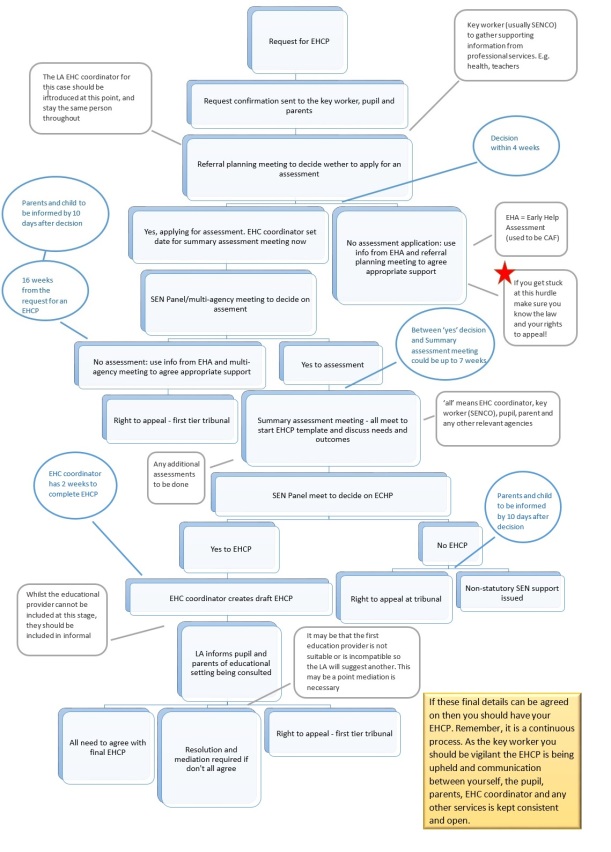Jamie, dad of Thomas, Year 11, talks about his experience of the transition from statement to EHC plan with a neighbouring LA.
Thomas’ background
My son, Thomas, was born at 2.45pm on 18th November 1998. In the first hours of his life Tom suffered a bleed to the brain, stopped breathing, his heart stopped twice and he slipped into a coma.
His fight back started three days later when he opened his eyes and pulled out his own ventilator tube and began to breathe by himself. He’s been fighting ever since and, it feels, so have we.
Now aged 16 he continues to suffer with low muscle tone, poor balance and co-ordination and slower reaction times. In addition to that, he has a complex range of cognitive needs including delayed speech development and wide ranging learning difficulties.
Transitional meeting into secondary school
Tom has had a statement of special educational needs since his education began. He has, however, thrived in mainstream school.
For parents, the prospect of trying to make a case to your Local Authority (LA) for provision for your disabled child in mainstream school can feel like a very intimidating one. Even though it’s not supposed to be an adversarial process, it can feel like it.
The LA is a large organisation with a working knowledge of pages and pages of statute. It will need convincing to even begin to commission a report from a health care professional, or investigate a particular need, let alone offer necessary provision. Budgetary constraints and clarification as to whether a need is medical or educational can easily confound and confuse even the most resilient and determined of parents.
Having a school with professionals who not only share the same level of knowledge of SEN responsibilities but also your own passion for providing for any child who walks through their door – no matter what their needs or vulnerabilities – is worth its weight in gold. We were lucky enough to find that support from our chosen school.
Review meetings
Since being in secondary school, we have had termly statement review meetings as well as annually. I cannot state the value of having both.
To simply meet once a year and carry out a retrospective view of what went right and what didn’t would have resulted in lots of missed opportunities.
We’ve found the termly catch-ups where everyone gave feedback on the previous 12 weeks very helpful.
Tom is present in the meetings and is encouraged to give his own feedback.
Regular contact and contact details
In addition to review meetings, there has been regular communication throughout term time.
Tom has been studying ‘Of Mice and Men’ in English. This is ironic because regardless of the best laid plans, things will occasionally go wrong. I think it’s important for schools to recognise that they can’t get everything right and with every plan they will need to test and refine what they are doing.
A statement might be a very formal and fixed document, but the approach to the provision of that plan needs to be very fluid. What works for one child might not necessarily work for the other.
In understanding that plans and support might need to be tweaked, a school needs to set up the infrastructure to be ready to receive feedback and react to it so it can address issues that arise.
Contact by email and regular dialogue with both the schools SENCo, Tom’s teachers and his teaching assistant has been invaluable.
The EHC transition
It’s scary to think how lengthy this process can be when compared to just how quickly the winter and spring terms can pass by. Thankfully, Tom’s school looked to start the review process almost as soon as Year 11 began. I recall that the SENCo began setting up meetings to discuss EHC planning as early as September. Those September meetings took place with internal access to professionals who sought permissions from us as parents to begin commissioning reports.
Tom has had:
- an educational psychologists report
- a speech and language therapy report
- an action plan report by Services for Young People
- a cognition and learning report
- a pupil portrait; as well as
- a report from us as parents and Tom himself on his views, interests and aspirations.
Reports were ready for early November, in readiness for the first EHC planning meeting with the LA.
Again, this level of support and planning has been invaluable.
We are now well on with the EHC transition process but it is still not complete. I can’t imagine the position we would be in if we had waited for the first meeting with the LA as the trigger to engage the professionals to report on Tom externally.
As it is, we are now in a position that, with the assistance of the school, we are working closely with representatives of Tom’s college on his transition into the next stage of his education. The draft EHC plan might not be ready yet, but people have a comprehensive understanding of our son’s needs and what will be required to help him going forward.
Tom’s aspirations for the future
Tom’s aspirations for the future are very similar to ours as his parents.
We want him to enjoy life as independently as possible with a meaningful career and be able to build up a network of friends and support.
When we asked Tom he said:
‘I’m looking forward to college but I’m going to miss my friends and worry about making new ones. When I leave college I would like to do something in media; either in computer graphics or film making. I would like to be able to have my own job and flat, perhaps with a mate and a 4K TV.’
His journey through school is nearly complete and I’m pleased to say that it has overall been a very positive experience for him. We’re looking forward to the next chapter in Tom’s education, and eventually the EHCP!
 It has been over a year since the SEN reforms came into play, yet almost daily I talk to SENCOs or parents who are struggling with EHC plans.
It has been over a year since the SEN reforms came into play, yet almost daily I talk to SENCOs or parents who are struggling with EHC plans.

 Earlier this year in SENCology I wrote a
Earlier this year in SENCology I wrote a